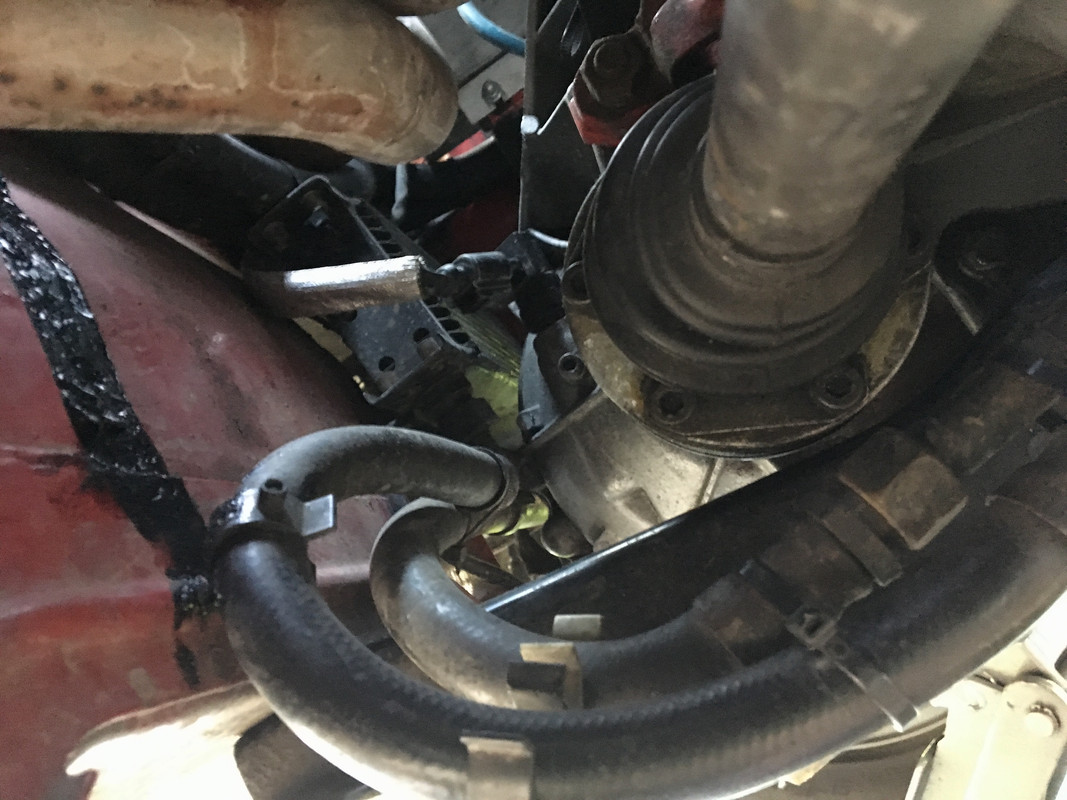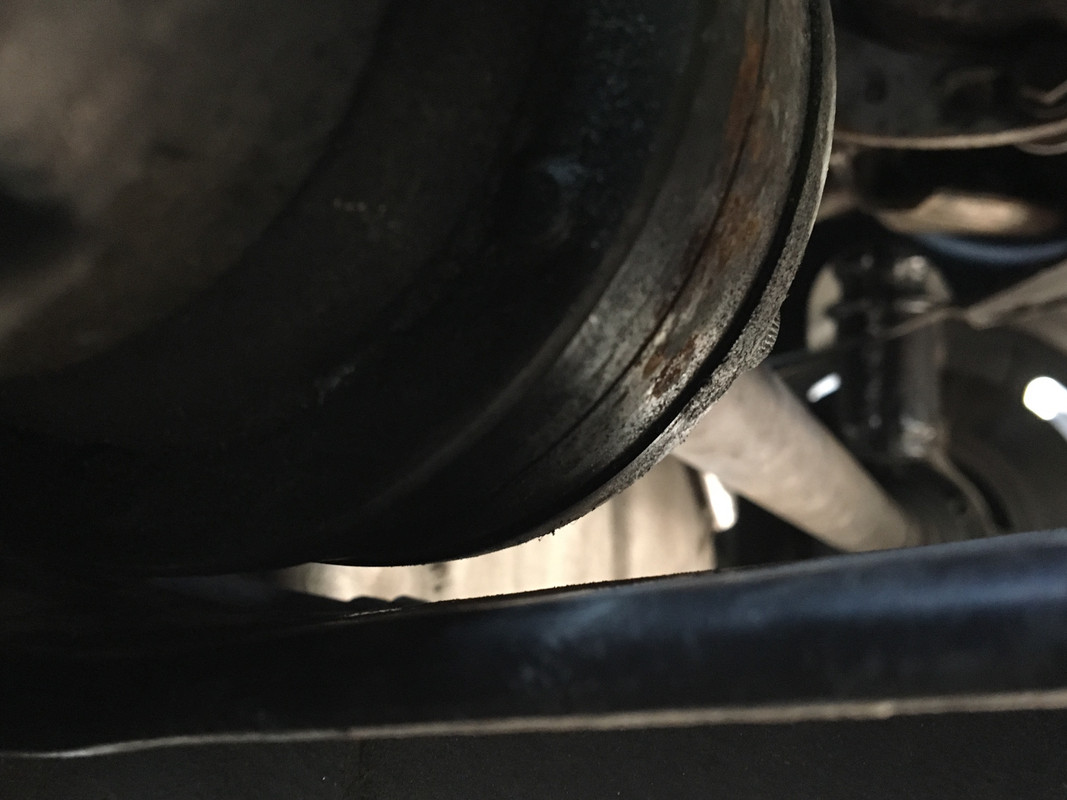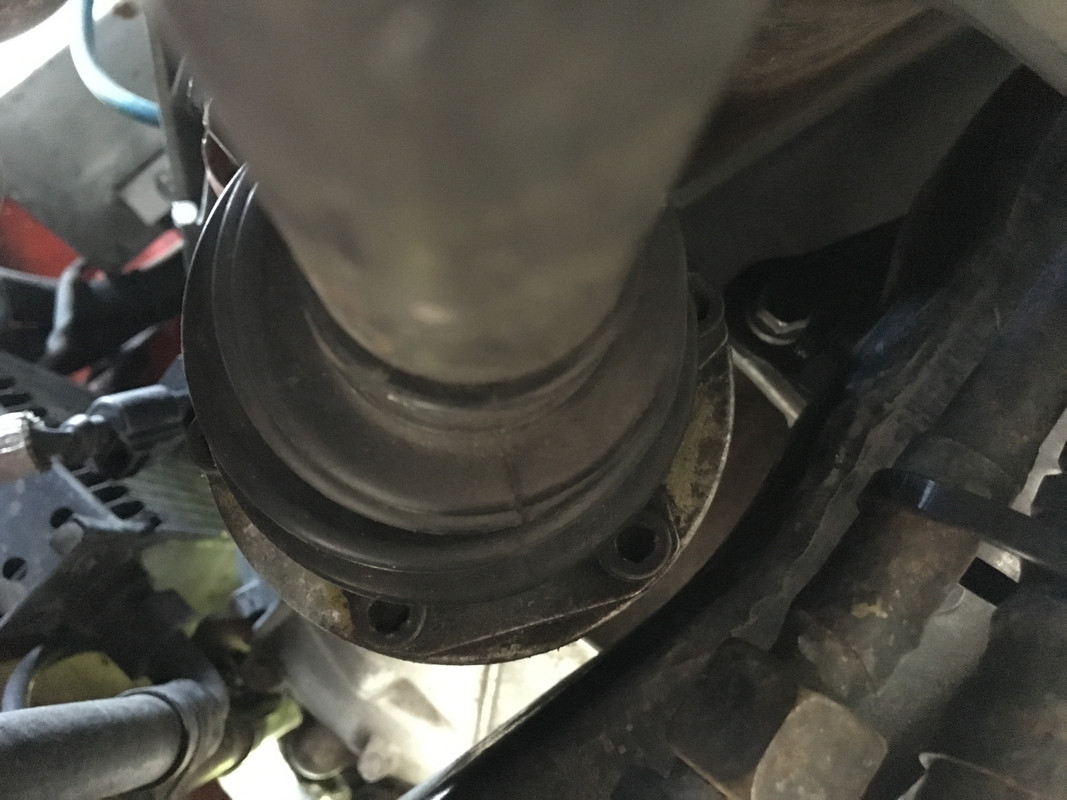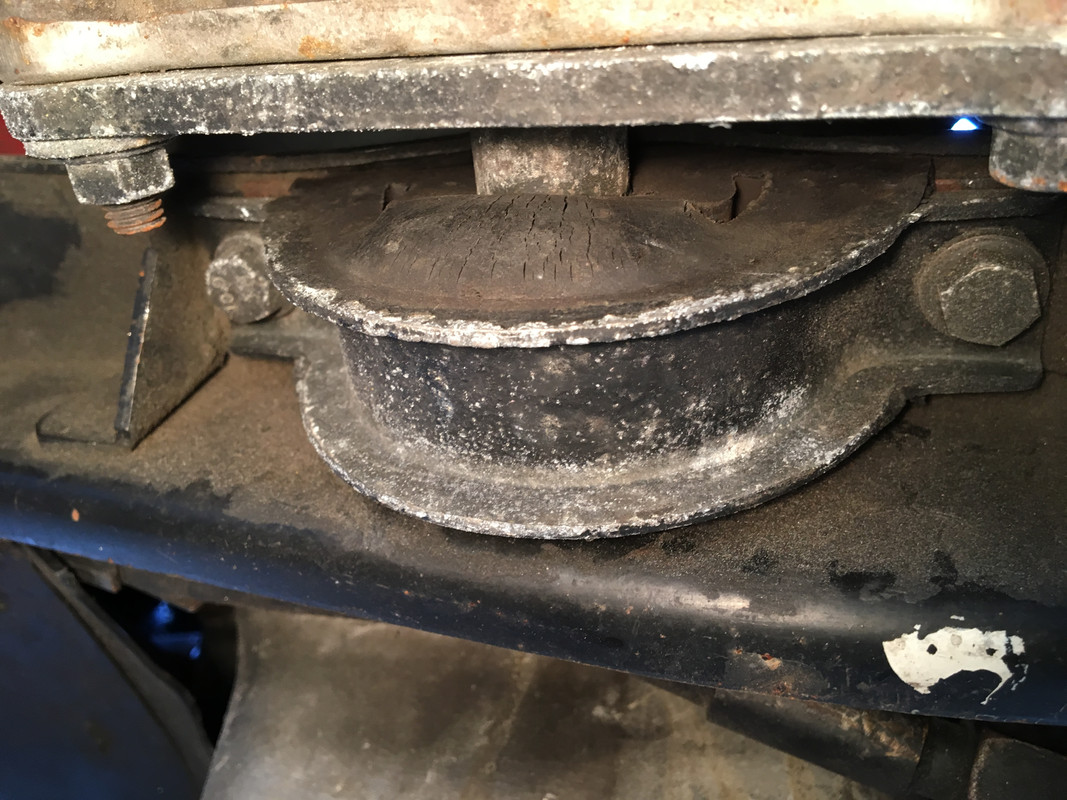Definite possibility. I seem to recall there are a couple unused holes on the bell housing. For that matter maybe two small additions, one on either side of the existing lower mount.
One question I've been wondering is if there is a need to retain the "pivoting" function of the center pin/lower mount. In the stock form it allows the entire engine/trans assembly to move fore-aft about its axis. The torque strut (dog-bone) then controls that motion. I assume the purpose is to allow some compliance for the torque reaction movement with acceleration-deceleration. I think that is why the dog-bone has such soft bushings. This 'compliance' would help smooth out actions like taking-off from a stand-still, gear changes, etc. It also allows some drivetrain vibration to be absorbed without being transmitted into the bodywork. On a performance (track) application such movement is not desired, but on a street driven car it creates a much smoother ride quality.
Adding a second lower mount will prevent the fore-aft pivoting movement. But I guess the question is if that would be a bad thing or not.
Another possibility I've considered is the addition of a lower mount "insert". These are common for other vehicles. It is typically a urethane piece molded to fit into the air-gaps (open voids) that are cast into the stock rubber portion of the original style mount {example shown below}. By filling-in those open areas on the rubber bushing it makes it firmer, less able to collapse, and limits the overall movement some. Yet the rubber still retains its natural compression nature to absorb vibration. This would be fairly easy and inexpensive to make. They have mixed results with them in other applications; depending on the original mount's design, location and quality for the particular vehicle. One factor might be the variation between replacement Fiat mounts for the location and shape of those air-gaps. Its been noted already by "Mxgrds" there are at least two versions of how the rubber is cast.
Watch this installation demonstration:
Some are one-piece that insert from one side only:
While others are two-piece that insert from both sides:
I saw one example of a "DIY" version:
For the X's lower mount it would fill these holes:
This may not be as effective on the X as with other mount designs, where there are more voids and they are located more below the mass center. The rubber portion at the bottom of the X's mount can still break down and deform. But maybe not as much?
On one of my used mounts we can see where an insert may have offered some benefit. Both voids are clearly very collapsed, especially toward the lower aspects (red arrows). The solid rubber portion at the bottom is also compressed (yellow arrow). Would maintaining the shape of the voids reduce the rubber's collapsing at the bottom?:
Compare this with the 'new' mount above to see the changes and decide if you think an insert will be of much benefit.








